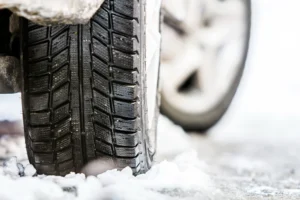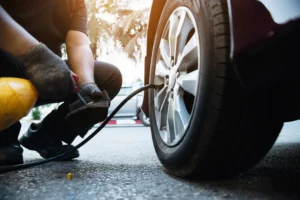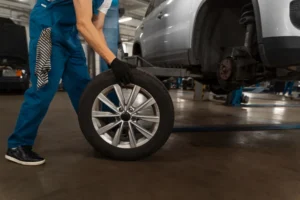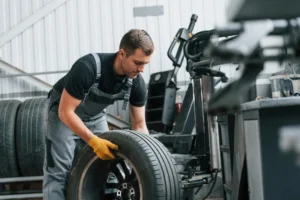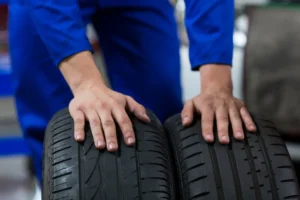Your tyres should ideally wear down evenly across the surface, ensuring maximum performance, safety, and longevity. When tyres wear unevenly, it reduces grip, affects handling, and shortens lifespan, often leading to unexpected replacements. By understanding the common causes of uneven wear and how to prevent them, you can save money and keep your vehicle safer on the road. In this guide, we’ll explore the top five causes of uneven tyre wear and practical steps to avoid them.
1. Incorrect Tyre Pressure
Tyre pressure has a major impact on wear patterns. Underinflated tyres often wear more heavily on the outer edges, while overinflated tyres wear more quickly down the centre. Both conditions reduce road grip, fuel efficiency, and braking effectiveness. Regularly checking your tyre pressures, ideally once a month and before long journeys, is the simplest way to ensure even wear. Always follow the manufacturer’s recommended pressure, found in your vehicle’s handbook or on the driver’s door frame.
2. Poor Wheel Alignment
Wheel alignment, or tracking, ensures your tyres meet the road at the correct angle. If your wheels are misaligned, one side of the tyre may wear faster than the other. This is often seen as one-sided wear, making tyres unsafe far sooner than expected. Misalignment usually results from hitting kerbs, potholes, or general suspension wear. Regular alignment checks, particularly after impact with road hazards, can prevent uneven wear and extend tyre life.
3. Unbalanced Wheels
Wheel balancing ensures that the weight of your wheels and tyres is distributed evenly around the axle. When wheels are out of balance, you may notice vibrations through the steering wheel, particularly at higher speeds. This imbalance can cause flat spots or patchy wear across the tyre surface. Professional wheel balancing, carried out whenever new tyres are fitted or when vibrations appear, ensures even rotation and longer-lasting tyres.
4. Worn Suspension Components
Your suspension system plays a crucial role in maintaining even tyre contact with the road. Worn or damaged suspension parts, such as ball joints, shock absorbers, or bushings, can lead to irregular tyre wear. For instance, failing shocks allow tyres to bounce excessively, causing cupping or scalloped patterns on the tread. Regular servicing and prompt replacement of worn suspension parts will keep tyres wearing evenly and improve overall ride quality.
5. Driving Habits and Load
Aggressive driving, such as hard cornering, rapid acceleration, and harsh braking, accelerates tyre wear unevenly. Similarly, carrying heavy loads without adjusting tyre pressure can overload tyres, particularly on specific axles, leading to uneven patterns. Smooth driving, steady braking, and adjusting pressures for extra weight will keep wear patterns balanced. Developing mindful driving habits not only improves safety but also ensures tyres last longer.
Preventing Uneven Tyre Wear
The best way to prevent uneven tyre wear is through regular checks and proactive maintenance. Inspect your tyres frequently for unusual wear patterns and adjust pressures as required. Schedule wheel alignment and balancing checks at least once a year, or sooner if you notice handling changes or vibrations. Rotate tyres annually to equalise wear across all four wheels. Finally, service your suspension system regularly to ensure components are in top condition. These steps will maximise tyre life, improve safety, and save you money in the long run.
Conclusion
Uneven tyre wear is more than an inconvenience — it’s a safety risk that can reduce handling, braking performance, and overall driving comfort. By addressing issues like tyre pressure, wheel alignment, balancing, suspension condition, and driving habits, you can prevent premature wear and extend the life of your tyres. Regular checks and mindful maintenance ensure you get the most from every set of tyres, keeping you safe and saving costs.
